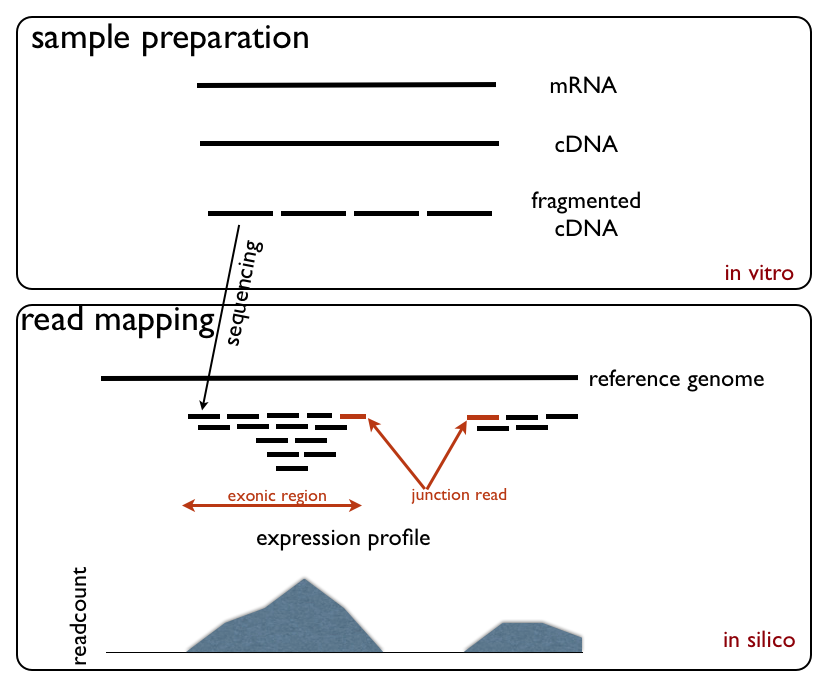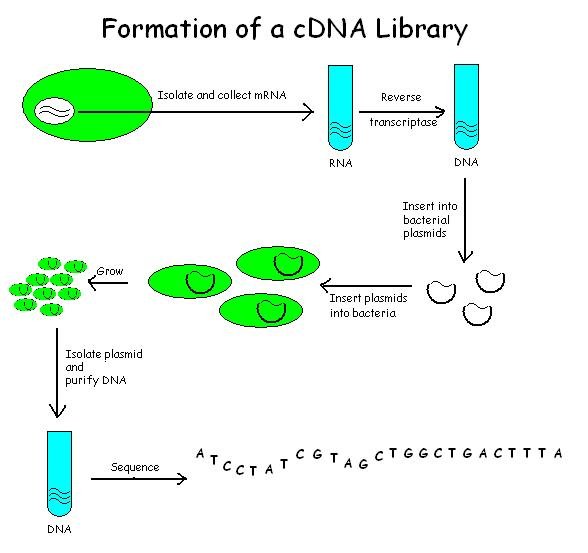|
BRB-seq
Bulk RNA barcoding and sequencing (BRB-seq) is an ultra-high-throughput bulk 3' mRNA-seq technology that uses early-stage sample barcoding and Unique molecular identifier, unique molecular identifiers (UMIs) to allow the pooling of up to 384 samples in one tube early in the sequencing library preparation workflow. The transcriptomic technology is compatible with both Illumina, Inc., Illumina and MGI (company), MGI short-read sequencing instruments. In standard RNA-Seq, RNA-seq, a sequencing library must be prepared for each RNA sample individually. In contrast, in BRB-seq, all samples are pooled early in the workflow for simultaneous processing to reduce the cost and hands-on time associated with the library preparation stage As BRB-seq is a 3' mRNA-seq technique, Short-read sequencing, short reads are generated only for the 3' region of polyadenylated mRNA molecules instead of the full length of transcripts like in standard RNA-Seq, RNA-seq. This means that BRB-seq requires a fa ... [...More Info...] [...Related Items...] OR: [Wikipedia] [Google] [Baidu] |
3' MRNA-seq
3' mRNA-seq is a quantitative, genome-wide transcriptomic technique based on the barcoding of the 3' untranslated region (UTR) of mRNA molecules. Unlike standard bulk RNA-seq, where short sequencing reads are generated along the entire length of mRNA transcripts, only the 3' end of polyadenylated RNAs are sequenced in 3' mRNA-seq. This approach results in a need for fewer reads to quantify the expression of a gene and reduces the sequencing depth required per sample while providing robust and reliable transcriptome-wide read-outs of gene expression levels comparable to full-length RNA-seq methods. Sample barcoding and the reduced per-sample sequencing depth also allow higher levels of sample multiplexing per experiment and lower the cost of transcriptome sequencing compared to full-length RNA-seq methods. These factors are crucial for large-scale, ultra-high-throughput gene expression studies or studies assessing differential gene expression between different experimental cond ... [...More Info...] [...Related Items...] OR: [Wikipedia] [Google] [Baidu] |
RNA-Seq
RNA-Seq (named as an abbreviation of RNA sequencing) is a technique that uses next-generation sequencing to reveal the presence and quantity of RNA molecules in a biological sample, providing a snapshot of gene expression in the sample, also known as transcriptome. RNA-Seq facilitates the ability to look at alternative gene spliced transcripts, post-transcriptional modifications, gene fusion, mutations/ SNPs and changes in gene expression over time, or differences in gene expression in different groups or treatments. In addition to mRNA transcripts, RNA-Seq can look at different populations of RNA to include total RNA, small RNA, such as miRNA, tRNA, and ribosomal profiling. RNA-Seq can also be used to determine exon/intron boundaries and verify or amend previously annotated 5' and 3' gene boundaries. Recent advances in RNA-Seq include single cell sequencing, bulk RNA sequencing, 3' mRNA-sequencing, in situ sequencing of fixed tissue, and native RNA molecule sequencin ... [...More Info...] [...Related Items...] OR: [Wikipedia] [Google] [Baidu] |
Unique Molecular Identifier
Unique molecular identifiers (UMIs), or molecular barcodes (MBC) are short sequences or molecular "tags" added to DNA fragments in some next generation sequencing library preparation protocols to identify the input DNA molecule. These tags are added before PCR amplification, and can be used to reduce errors and quantitative bias introduced by the amplification. Applications include analysis of unique cDNAs to avoid PCR biases in iCLIP, variant calling in ctDNA, gene expression in single-cell RNA-seq (scRNA-seq) and haplotyping via linked reads. See also * Batch effect * Multiplex (assay) *BRB-seq Bulk RNA barcoding and sequencing (BRB-seq) is an ultra-high-throughput bulk 3' mRNA-seq technology that uses early-stage sample barcoding and Unique molecular identifier, unique molecular identifiers (UMIs) to allow the pooling of up to 384 samp ... References DNA sequencing {{genetics-stub ... [...More Info...] [...Related Items...] OR: [Wikipedia] [Google] [Baidu] |
Single-cell Transcriptomics
Single-cell transcriptomics examines the gene expression level of individual Cell (biology), cells in a given population by simultaneously measuring the RNA concentration (conventionally only messenger RNA (mRNA)) of hundreds to thousands of genes. Single-cell transcriptomics makes it possible to unravel Heterogenous, heterogeneous cell populations, reconstruct cellular developmental pathways, and model transcriptional dynamics — all previously masked in bulk RNA sequencing. Background The development of high-throughput RNA sequencing (RNA-seq) and microarrays has made gene expression analysis a routine. RNA analysis was previously limited to tracing individual Transcription (biology), transcripts by Northern blots or quantitative PCR. Higher throughput and speed allow researchers to frequently characterize the expression profiles of populations of thousands of cells. The data from bulk assays has led to identifying genes differentially expressed in distinct cell populations, ... [...More Info...] [...Related Items...] OR: [Wikipedia] [Google] [Baidu] |
Artificial Intelligence
Artificial intelligence (AI) is the capability of computer, computational systems to perform tasks typically associated with human intelligence, such as learning, reasoning, problem-solving, perception, and decision-making. It is a field of research in computer science that develops and studies methods and software that enable machines to machine perception, perceive their environment and use machine learning, learning and intelligence to take actions that maximize their chances of achieving defined goals. High-profile applications of AI include advanced web search engines (e.g., Google Search); recommendation systems (used by YouTube, Amazon (company), Amazon, and Netflix); virtual assistants (e.g., Google Assistant, Siri, and Amazon Alexa, Alexa); autonomous vehicles (e.g., Waymo); Generative artificial intelligence, generative and Computational creativity, creative tools (e.g., ChatGPT and AI art); and Superintelligence, superhuman play and analysis in strategy games (e.g., ... [...More Info...] [...Related Items...] OR: [Wikipedia] [Google] [Baidu] |
CDNA Library
A cDNA library is a combination of cloned cDNA (complementary DNA) fragments inserted into a collection of host cells, which constitute some portion of the transcriptome of the organism and are stored as a "library". cDNA is produced from fully transcribed mRNA found in the nucleus and therefore contains only the expressed genes of an organism. Similarly, tissue-specific cDNA libraries can be produced. In eukaryotic cells the mature mRNA is already spliced, hence the cDNA produced lacks introns and can be readily expressed in a bacterial cell. While information in cDNA libraries is a powerful and useful tool since gene products are easily identified, the libraries lack information about enhancers, introns, and other regulatory elements found in a genomic DNA library. cDNA Library Construction cDNA is created from a mature mRNA from a eukaryotic cell with the use of reverse transcriptase. In eukaryotes, a poly-(A) tail (consisting of a long sequence of adenine nucleotides) ... [...More Info...] [...Related Items...] OR: [Wikipedia] [Google] [Baidu] |
Basic Research
Basic research, also called pure research, fundamental research, basic science, or pure science, is a type of scientific research with the aim of improving scientific theories for better understanding and prediction of natural or other phenomena. In contrast, applied research uses scientific theories to develop technology or techniques, which can be used to intervene and ''alter'' natural or other phenomena. Though often driven simply by curiosity,"Curiosity creates cures: The value and impact of basic research , National Institute of General Medical Sciences, |
Population Study
Population study is an interdisciplinary field of scientific study that uses various statistical methods and models to analyse, determine, address, and predict population challenges and trends from data collected through various data collection methods such as population census, registration method, sampling, and some other systems of data sources. In the various fields of healthcare, a population study is a study of a group of individuals taken from the general population who share a common characteristic, such as age, sex, or health condition. This group may be studied for different reasons, such as their response to a drug or risk of getting a disease. See also *Demography Demography () is the statistical study of human populations: their size, composition (e.g., ethnic group, age), and how they change through the interplay of fertility (births), mortality (deaths), and migration. Demographic analysis examine ... References External links Population studye ... [...More Info...] [...Related Items...] OR: [Wikipedia] [Google] [Baidu] |
Drug Discovery
In the fields of medicine, biotechnology, and pharmacology, drug discovery is the process by which new candidate medications are discovered. Historically, drugs were discovered by identifying the active ingredient from traditional remedies or by serendipitous discovery, as with penicillin. More recently, chemical libraries of synthetic small molecules, natural products, or extracts were screened in intact cells or whole organisms to identify substances that had a desirable therapeutic effect in a process known as classical pharmacology. After sequencing of the human genome allowed rapid cloning and synthesis of large quantities of purified proteins, it has become common practice to use high throughput screening of large compounds libraries against isolated biological targets which are hypothesized to be disease-modifying in a process known as reverse pharmacology. Hits from these screens are then tested in cells and then in animals for efficacy. Modern drug discovery i ... [...More Info...] [...Related Items...] OR: [Wikipedia] [Google] [Baidu] |
Genome Research
''Genome Research'' is a peer-reviewed scientific journal published by Cold Spring Harbor Laboratory Press. Disregarding review journals, Genome Research ranks 2nd in the category 'Genetics and Genomics' after Nature Genetics. The focus of the journal is on research that provides novel insights into the genome biology of all organisms, including advances in genomic medicine. This scope includes genome structure and function, comparative genomics, molecular evolution, genome-scale quantitative and population genetics, proteomics, epigenomics, and systems biology. The journal also features interesting gene discoveries and reports of cutting-edge computational biology and high-throughput biology methodologies. New data in these areas are published as research papers, or methods and resource reports that provide novel information on technologies or tools that will be of interest to a broad readership. The journal was established in 1991 as ''PCR Methods and Applications'' and obtai ... [...More Info...] [...Related Items...] OR: [Wikipedia] [Google] [Baidu] |
École Polytechnique Fédérale De Lausanne
The École Polytechnique Fédérale de Lausanne (, EPFL) is a public university, public research university in Lausanne, Switzerland, founded in 1969 with the mission to "train talented engineers in Switzerland". Like its sister institution ETH Zurich, EPFL is part of the ETH Domain, Swiss Federal Institutes of Technology Domain which groups several universities and research institutes under the Federal Department of Economic Affairs, Education and Research. As of 2024, EPFL enrolled 14,012 students from over 130 countries. EPFL has an Lausanne campus, urban campus that extends alongside Lake Geneva, and includes the Swiss Innovation Park, EPFL Innovation Park as well as university research centers and affiliated laboratories. History The roots of modern-day EPFL can be traced back to the foundation of a private school under the name ''École spéciale de Lausanne'' in 1853 at the initiative of Louis Rivier, a graduate of the and John Gay, the then professor and rector ... [...More Info...] [...Related Items...] OR: [Wikipedia] [Google] [Baidu] |




